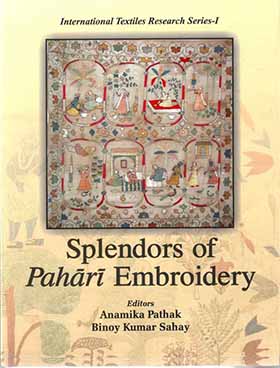ABSTRACT
The traditional folk art of Punjabi Phulkari and its revival in the major Metropolises of Punjab by some associations Industries, Export, corporations, Industrial society Ltd. Phulkari has always played in important role in the lives of Punjabi girls. Phulkaris not only reflect the versatility, hard work and creativity of the rural women but it also represents the tradition and culture of Punjab. In contemporary Punjab the authentic tradition of phulkari has started to fade out due to various socioeconomic factors. Punjab has a rich culture and heritage it is famous for its art and craft. The women of Punjab are not only strong and well built, but they also have a simple heart and a creative imagination that enables them to make original and outstanding arts. Phulkari is the famous textile are of Punjab which is primarily made by Punjabi women for their personal use. This art of embroidery was given great importance in Punjab which is clear from what Guru Nanak Dev Ji the founder of the sikh religion, said in the holy book Guru Granth sahib. In the past, the women of Punjab were illiterate, but all of them were well trained in the household arts such as knitting, sewing, spinning and drying, weaving, cooking and embroidering. The elder members of the family influenced this training in a friendly environment. The main characterises of phulkari is the embroidery is on the wrong side of the cloth so the design is automatically embroidered on the right side of the cloth. Traditionally phulkaris and bagh were given to a bride as a gift at the time of her wedding.
This new popularity is the result of the strength, beauty and artistry that is attracting buyers. In the past, a single shawl took six to twelve month to complete which in valued painstaking needle work by elder women of the house hold. However, in the modern times the commercial phulkari has provided livelihood to many rural woman and has contributed immensely to the rural economy by empowering rural women of Punjab.
Key words: Phulkari, Needlework, Traditions, Bagh, Punjab, Textile.
ABOUT AUTHOR
PARAMJIT KAUR
ASSISTANT PROFESSOR, PT. MOHAN LAL SD COLLEGE
I am working as Assistant professor in fashion designing from 2008 at PT.Mohan Lal SD College, Gurdaspur. I have completed my Bachelor of Designing and masters from B.B.K DAV College Amritsar. I am presently researching on insignias and batches of Malerkotla.


